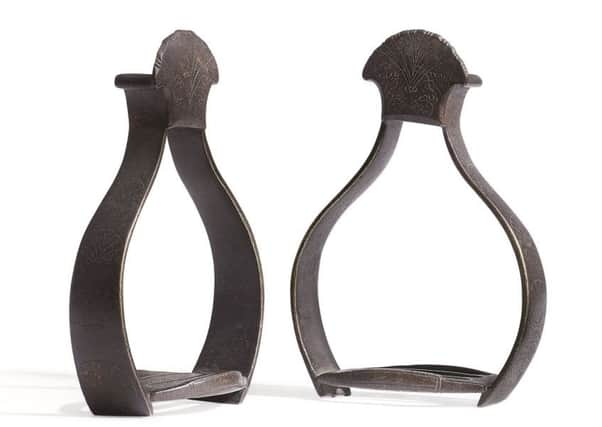King Billy's Battle of Boyne stirrups fail to reach £40,000 auction reserve


The copper-alloy relics from the famous 1690 encounter have an impeccable provenance and originally belonged to William’s grandfather, Charles I.
The catalogue guide price valued the pair at between £40,000 and £60,000.
Advertisement
Hide AdAdvertisement
Hide AdMarked with the crowned CR cypher of Charles and the date 1626, the stirrups were given by King William to Sir Frederick Hamilton, his aide-de-camp.
They were passed on – along with the saddle cloth and a pair of gloves used by King Billy at the Boyne – to Colonel Edward Cary in 1732 and then Lt Col William Blacker in 1797.
Following Lt Col Blacker’s death in 1855, his nephew Major Stewart Blacker placed the saddle cloth and gloves with the Grand Orange Lodge of Ireland for safekeeping.
Sometime prior to Major Blacker’s death in 1881 the items were gifted to the Orange Order and are now on display at the Museum of Orange Heritage at Schomberg House in east Belfast.
Advertisement
Hide AdAdvertisement
Hide AdThe stirrups were retained by descendants of the Blacker family.
The auction catalogue described the equestrian furniture as “bow-sided pieces decorated with incised shells and a lightly punched scrollwork”.
No other stirrups with such a strong royal connection are known to have survived from the 17th century.
Ahead of the sale, historian Dr David Hume described the stirrups as “a very significant artefact”, and revealed that a potential buyer had approached him for his opinion on the artefacts.
Advertisement
Hide AdAdvertisement
Hide Ad“It’s not often items like this come on the market,” Mr Hume told the BBC.
“But the success of the auction depends on who is interested as the estimated price seems quite high for a pair of stirrups”.
Dr Hume said King William was in the “thick of the battle” at the Boyne, and that the sturdy stirrups would have come in handy as “his horse got stuck in the mud”.
It is understood the high sale price of the items prevented the Orange Order from planning a bid.
Advertisement
Hide AdAdvertisement
Hide AdAn 1837 manuscript written by William Blacker records that a horse bearing the King William-linked artefacts – at the head of a parade of Orangemen – required a team of men to keep back the crowds, as “there was a multitude, particularly of old people, both men and women, who strove to kiss or touch the relics as they passed along”.